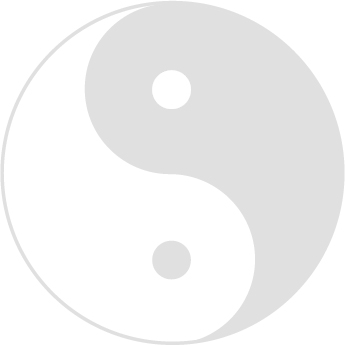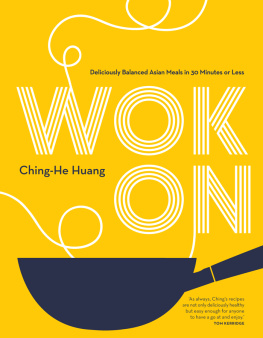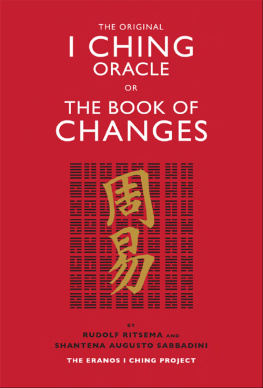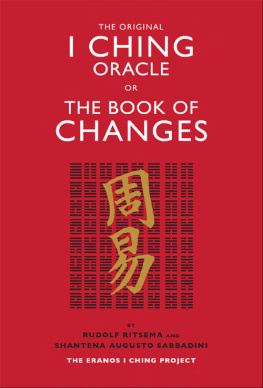Huang Kerson - I Ching: The Oracle (Revised Edition)
Here you can read online Huang Kerson - I Ching: The Oracle (Revised Edition) full text of the book (entire story) in english for free. Download pdf and epub, get meaning, cover and reviews about this ebook. publisher: World Scientific Publishing Company, genre: Children. Description of the work, (preface) as well as reviews are available. Best literature library LitArk.com created for fans of good reading and offers a wide selection of genres:
Romance novel
Science fiction
Adventure
Detective
Science
History
Home and family
Prose
Art
Politics
Computer
Non-fiction
Religion
Business
Children
Humor
Choose a favorite category and find really read worthwhile books. Enjoy immersion in the world of imagination, feel the emotions of the characters or learn something new for yourself, make an fascinating discovery.
- Book:I Ching: The Oracle (Revised Edition)
- Author:
- Publisher:World Scientific Publishing Company
- Genre:
- Rating:5 / 5
- Favourites:Add to favourites
- Your mark:
- 100
- 1
- 2
- 3
- 4
- 5
I Ching: The Oracle (Revised Edition): summary, description and annotation
We offer to read an annotation, description, summary or preface (depends on what the author of the book "I Ching: The Oracle (Revised Edition)" wrote himself). If you haven't found the necessary information about the book — write in the comments, we will try to find it.
I Ching: The Oracle (Revised Edition) — read online for free the complete book (whole text) full work
Below is the text of the book, divided by pages. System saving the place of the last page read, allows you to conveniently read the book "I Ching: The Oracle (Revised Edition)" online for free, without having to search again every time where you left off. Put a bookmark, and you can go to the page where you finished reading at any time.
Font size:
Interval:
Bookmark:
Revised Edition I CHING The Oracle Revised Edition I CHING The Oracle Kerson Huang MIT Published by World Century Publishing Corp. 27 Warren Street Suite 401-402 Hackensack, NJ 07601 USA and World Scientific Publishing Co. Pte. Ltd. 5 Toh Tuck Link, Singapore 596224 USA office: 27 Warren Street, Suite 401-402, Hackensack, NJ 07601 UK office: 57 Shelton Street, Covent Garden, London WC2H 9HE Library of Congress Control Number: 2014933991British Library Cataloguing-in-Publication Data A catalogue record for this book is available from the British Library. and World Scientific Publishing Co. Pte. Ltd. All rights reserved. All rights reserved.
Published by World Century Publishing Corp. 27 Warren Street Suite 401-402 Hackensack, NJ 07601 USA and World Scientific Publishing Co. Pte. Ltd. 5 Toh Tuck Link, Singapore 596224 USA office: 27 Warren Street, Suite 401-402, Hackensack, NJ 07601 UK office: 57 Shelton Street, Covent Garden, London WC2H 9HE Library of Congress Control Number: 2014933991British Library Cataloguing-in-Publication Data A catalogue record for this book is available from the British Library. and World Scientific Publishing Co. Pte. Ltd. All rights reserved. All rights reserved.
This book, or parts thereof, may not be reproduced in any form or by any means, electronic or mechanical, including photocopying, recording or any information storage and retrieval system now known or to be invented, without written permission from the Publisher. For photocopying of material in this volume, please pay a copying fee through the Copyright Clearance Center, Inc., 222 Rosewood Drive, Danvers, MA 01923, USA. In this case permission to photocopy is not required from the publisher. ISBN 978-981-4522-60-1 In-house Editor: Ho Yi Kai Printed in Singapore PREFACE In the three thousand years since the I Ching, Canon of Change, was created as the court oracle of a Chinese dynasty, it has been embellished, analyzed, and annotated to such an extent that its original face has become all but unrecognizable. The Confucians claimed the I Ching as their own, and made it into a conveyor of morality. This was done with the inclusion of writings known as the Ten Wings, which intertwine with the original text, like a parasitic vine on a tree, and it has become difficult to distinguish the strangling vine from the tree.
The Daoist, on the other hand, pay scant attention to the text, but built a mystical system around the symbolism of the I Ching, with an intricate numerology. This has a profound influence in Chinese folk culture, touching the daily lives of millions of people through its use in liturgy, medicine, and feng shui. The Western world know about the I Ching mainly through Richard Wilhelms 1923 German translation, rendered into English by Cary F. Baynes [Wilhelm/Baynes, I Ching (Princeton University Press, 1967)]. The Swiss psychologist Carl Jung used this version as psychoanalytic tool, and helped make it the prophet of the counterculture of the nineteen-sixties. However, this painstaking and conscientious translation treats the Ten Wings as central, dutifully mouthing Confucian morality filtered through Christian lenses.
Thus, the true face of the I Ching laid buried for thousands of years, until the passing of the Confucian state in China enabled scholars to make objective studies in light of archeological discoveries. We now know that the original text of the I Ching is a compilation of divination texts, filled with folklore, poetry, and historical figures. The purpose of this book is to reveal that original face, the oracle of change, based on the ceaseless interchange between Yin and Yang, the basic forces of the universe. In the modern world, we regard Yin and Yang as powerful allegories rather than physical truth, the latter having been entrusted to science. The I Ching, as oracle, addresses the inner universe of human feelings, rather than the external world. In the respect it is as valid now as it was three thousand years ago.
The only difference is that we now know the distinction between the inner and the outer universe, and this, paradoxically, makes an oracle more acceptable and necessary. Kerson Huang Naples, Florida, USA May 19, 2013 PREFACE TO FIRST EDITION Three thousand years ago, revolution brought down the house of Shang in China, and the mandate of Heaven passed to Zhou. Thus ended the era of bronze vessels and oracle bones, and began the great dynasty that saw the rise of Chinese philosophy. The Zhou people knew the deepest secret of the universe, that Yin and Yang are at the root of things, that they continually change into each other, giving motion to the world. They expressed this in their oracle, the I Ching, the Canon of Change. This book contains a translation of this ancient classic into English.
The Chinese original is set side-by-side with the translation. Two things set this translation apart from all previous ones. First, archeological findings are used to uncover the meaning of passages obscured for thousands of years. Second, it preserves the flavor of the original in a poetic rendition. An introductory part of this book supplies the historical and philosophical background to the I Ching. We tell the story of ancient Chinese civilization, pointing out events and figures mentioned in the I Ching.
The undisguised face of the I Ching will appeal to the modern reader, who will read it in his or her own individual way, as poetry, as discoverer of self, or as soothsayer. It is in the grand tradition of the I Ching for different people to see different things: To Confucius, who was born in 550 BC, it was a source of ethics. To Leibnitz, the eighteenth century inventor of calculus, it was the essence of binary mathematics. To Jung, Freuds rival in psychology, it was an explorer of the unconscious. To some Wall Streeters, according to Adam Smith in his book Powers of Mind (Random House, New York, 1975), it can predict the stock market. K.H.
Marblehead, Massachusetts, USA October, 1983 ACKNOWLEDGEMENT To my late father I owe my love of the Chinese classics. On a yellowed copy of the I Ching that he gave me many years ago, he had inscribed Taking up the fathers work a phrase from the Hexagram WORK. This book might be a fulfillment of that wish, although I am not sure he would have approved of the result. I thank Nathan Sivin, with whom I had many discussions of the I Ching, when we jointly ran an undergraduate seminar on the subject in the nineteen seventies, at the Massachusetts Institute of Technology. In writing this book I have drawn heavily on the following works in Chinese:  Dong Zuobin, Sixty Years of Oracle-Bone Studies, (Yi Wen Publishing Co.
Dong Zuobin, Sixty Years of Oracle-Bone Studies, (Yi Wen Publishing Co.  Gao Heng, Discourses on the Old Classic Zhou Yi, (Zhong Hua Books, Hong Kong, 1968).
Gao Heng, Discourses on the Old Classic Zhou Yi, (Zhong Hua Books, Hong Kong, 1968).  Gao Heng, Discourses on the Old Classic Zhou Yi, (Zhong Hua Books, Hong Kong, 1968).
Gao Heng, Discourses on the Old Classic Zhou Yi, (Zhong Hua Books, Hong Kong, 1968).
CONTENTS Part I ABOUT THE I CHING INTRODUCTION The Binary Nature of Things Y ou might have heard about the I Ching, or even used it. Its underlying idea is that two basic attributes lie at the root of all things, called Yin and Yang. Yin is passive, yielding, and nurturing, while Yang is active, dominating, and creative. Symbolically one draws a broken line to represent Yin, and a solid line to represent Yang:
INTRODUCTION The Binary Nature of Things Y ou might have heard about the I Ching, or even used it. Its underlying idea is that two basic attributes lie at the root of all things, called Yin and Yang. Yin is passive, yielding, and nurturing, while Yang is active, dominating, and creative. Symbolically one draws a broken line to represent Yin, and a solid line to represent Yang:  Far from being static, these attributes change into each other continually. When Yin holds sway for too long, it grows old, and renews itself by changing into Yang, and vice versa. The alternation between Yin and Yang was held to be the moving force of our world and all its manifestations, whether social, political, economic, or psychological.
Far from being static, these attributes change into each other continually. When Yin holds sway for too long, it grows old, and renews itself by changing into Yang, and vice versa. The alternation between Yin and Yang was held to be the moving force of our world and all its manifestations, whether social, political, economic, or psychological.
Font size:
Interval:
Bookmark:
Similar books «I Ching: The Oracle (Revised Edition)»
Look at similar books to I Ching: The Oracle (Revised Edition). We have selected literature similar in name and meaning in the hope of providing readers with more options to find new, interesting, not yet read works.
Discussion, reviews of the book I Ching: The Oracle (Revised Edition) and just readers' own opinions. Leave your comments, write what you think about the work, its meaning or the main characters. Specify what exactly you liked and what you didn't like, and why you think so.










